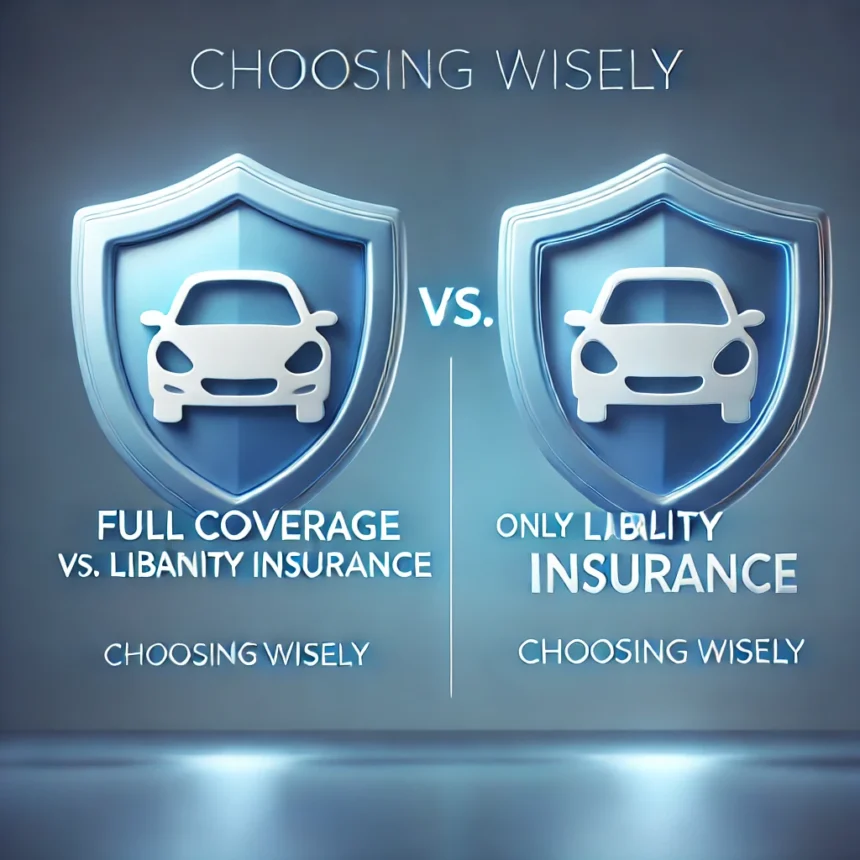Struggling to choose between full coverage and liability car insurance? This heartfelt guide breaks down costs, risks, and tips to help you decide what’s best for your wallet and peace of mind.
Understanding the Basics: What’s the Difference?When Liability Insurance Might Be Enough (And When It’s Risky)Why Full Coverage Could Save Your Financial Future5 Heart-Centered Questions to Decide What’s Right for You3 Costly Myths DebunkedHow to Save Money Without Gambling on CoverageThe Verdict: It’s Not About Cheap vs. Expensive—It’s About Smart vs. RegretfulIntroduction: The Crossroads of Protection and Peace of Mind
You’re sitting in your driveway, keys in hand, about to start your morning commute. Suddenly, you remember last week’s hailstorm that left dents on half the cars in your neighborhood. Or maybe it’s the texting driver who swerved into your lane yesterday. The question hits you: “Am I really covered if the worst happens?”
Car insurance isn’t just a legal checkbox—it’s a safety net for your finances, your car, and your future. But choosing between full coverage and liability-only insurance can feel like navigating a maze blindfolded. Let’s simplify the journey, so you can drive with confidence, not confusion.
Understanding the Basics: What’s the Difference?
- Liability Insurance: The Legal Safety Net
- What it covers: Damage or injuries you cause to others (e.g., their car, medical bills).
- What it doesn’t: Your own car repairs, theft, or natural disasters.
- Imagine: You rear-end another driver. Liability pays for their repairs, but your bumper? That’s on you.
- Full Coverage: The Blanket of Security
- Includes: Liability + Collision (accidents) + Comprehensive (non-accident damage like theft, fire, or falling trees).
- Imagine: A tornado flips your car. Full coverage handles repairs, while liability alone leaves you stranded.
When Liability Insurance Might Be Enough (And When It’s Risky)
Good for:
- Older cars with low value (e.g., a 2008 sedan worth $3,000).
- Drivers with tight budgets who can afford out-of-pocket repairs.
- Minimal risk-takers in areas with low crime or accident rates.
The Hidden Risk:
- A single at-fault accident could cost thousands in repairs.
- Real-life example: Jake skipped full coverage on his 2010 pickup. When he hit black ice and totaled it, he had to drain his savings to replace it.
Why Full Coverage Could Save Your Financial Future
Ideal for:
- New or expensive cars (lenders require full coverage for financed/leased vehicles).
- Drivers in high-risk areas (e.g., cities with frequent accidents or extreme weather).
- Anyone who can’t afford a surprise $5,000 repair bill.
The Trade-off:
- Higher premiums, but the cost of not having it could be catastrophic.
- Real-life example: Maria’s SUV was stolen outside her apartment. Full coverage reimbursed her $25,000 loss—liability alone would’ve left her carless.
5 Heart-Centered Questions to Decide What’s Right for You
- “What’s my car’s current value?”
- Use tools like Kelley Blue Book. If repairs cost more than 10% of its value, liability might suffice.
- “How much can I realistically afford in emergencies?”
- If $1,000 would break the bank, full coverage adds a safety layer.
- “Do I drive in high-risk zones?”
- Think: Busy highways, flood-prone areas, or neighborhoods with high theft rates.
- “Am I still paying off my car?”
- Lenders require full coverage until you own the title outright.
- “How would I handle total loss?”
- Could you replace your car tomorrow without insurance help?
3 Costly Myths Debunked
- “Full coverage means everything is covered.”
- Truth: It excludes wear-and-tear, intentional damage, or unlisted drivers. Always read the fine print.
- “Liability is enough if I’m a safe driver.”
- Truth: Even cautious drivers can’t control others. Hit-and-runs or uninsured drivers leave you vulnerable.
- “Switching mid-policy will hurt me.”
- Truth: You can adjust coverage anytime. Dropping collision on an aging car? Notify your insurer to lower costs.
How to Save Money Without Gambling on Coverage
- Raise Your Deductible
- A 1,000vs.500 deductible can cut premiums by 15-30%. Just ensure you can cover the higher out-of-pocket cost.
- Bundle Policies
- Pair auto + home/renters insurance for up to 25% off. Companies like Allstate and Nationwide reward loyalty.
- Ask About Discounts
- Safe driver, good student, anti-theft devices, or even paying annually—every % counts.
- Reassess Yearly
- As your car depreciates, adjust coverage. A paid-off 2015 car might not need comprehensive anymore.
The Verdict: It’s Not About Cheap vs. Expensive—It’s About Smart vs. Regretful
Your car insurance should match your life, not a one-size-fits-all formula.
- Choose liability if: Your car is old, you have robust savings, and you’re okay with financial risk.
- Choose full coverage if: Your car is new, financed, or irreplaceable to your daily life.
Conclusion: Drive Confidently, Rest Easily
Insurance isn’t just about protecting your car—it’s about protecting your life from spiraling into crisis. Whether you opt for the lean safety of liability or the fortress of full coverage, let your decision be rooted in self-compassion, not fear. Revisit your policy yearly, ask questions, and remember: The right choice is the one that lets you sleep soundly, knowing you’re prepared for whatever lies around the bend.
